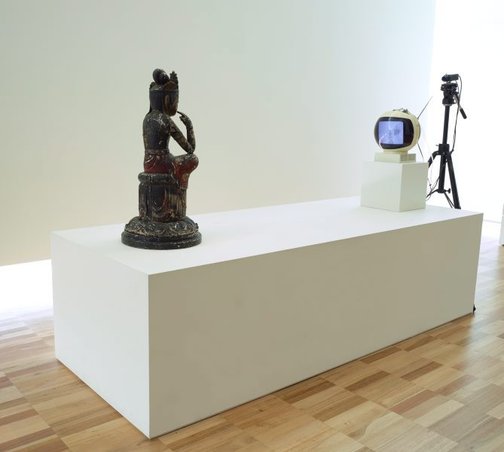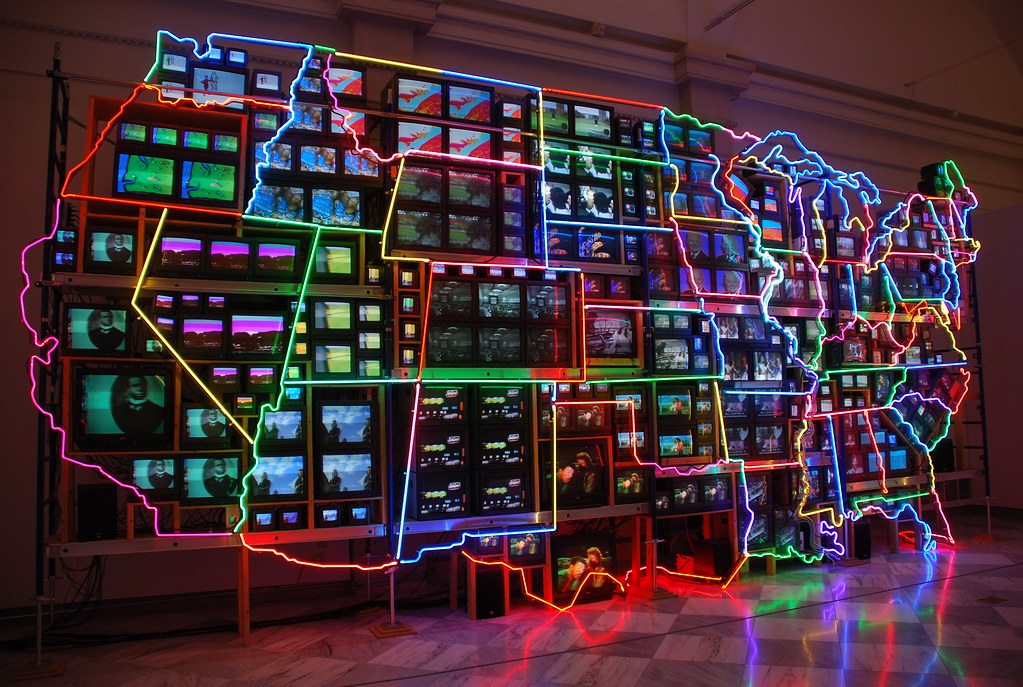Difference between Video Art and Commercial
Today we are going to compare video art and commercial and find out how these two media forms stand out differently. Before we go deeper into the topic, let's have a brief understanding of what video art and commercial is all about.


Paik’s 1995 piece Electronic Superhighway: Continental U.S., Alaska, Hawaii, on permanent display at the Lincoln Gallery of the Smithsonian American Art Museum, is a stunning example of his cultural criticism. With this piece, Paik offers up his commentary about an American culture obsessed with television, the moving image, and bright shiny things.

Chelsea Girls is a 1966 experimental underground film directed by Andy Warhol and Paul Morrissey. The film was Warhol's first major commercial success after a long line of avant-garde art films (both feature-length and short). It was shot at the Hotel Chelsea and other locations in New York City, and follows the lives of several of the young women who live there, and stars many of Warhol's superstars. It is presented in a split screen, accompanied by alternating soundtracks attached to each scene and an alternation between black-and-white and color photography. The original cut runs at just over three hours long.
Referenced websites:
Video Art
"Video art is an art form which relies on moving pictures in a visual and audio medium." -Wikipedia(Video Art)Video art can take many forms:
- recordings that are broadcast
- installations viewed in galleries or museums
- works streamed online, distributed as videotapes
- DVDs
- performances which may incorporate one or more television sets, video monitors, and projections, displaying ‘live’ or recorded images and sounds
Founder Of Video Art
There are two figures that can be considered the founder of video art, which is Nam June Paik and Andy Warhol. In this section, I will show you some of their famous works.
Nam June Paik
TV Buddha

In 1976 John Kaldor invited Paik and his collaborator, the cellist Charlotte Moorman to create a Kaldor Public Art Project in Australia. As part of the project, Moorman played the ‘TV cello’. Made from three televisions removed from their sets so that their inner workings can be seen, with an attached cello bridge, tailpiece and strings forming a cello-like instrument.
Electronic Superhighway

Andy Warhol
Chelsea Girls

Commercial (Advertisement)
(This section is taken from Wikipedia-Advertising)
Advertising is an audio or visual form of marketing communication that employs an openly sponsored, nonpersonal message to promote or sell a product, service or idea.Sponsors of advertising are often businesses who wish to promote their products or services. Advertising is differentiated from public relations in that an advertiser usually pays for and has control over the message. It is differentiated from personal selling in that the message is nonpersonal, i.e., not directed to a particular individual. Advertising is communicated through various mass media, including old media such as newspapers, magazines, Television, Radio, outdoor advertising or direct mail; or new media such as search results, blogs, websites or text messages. The actual presentation of the message in a medium is referred to as an advertisement or "ad".An example of popular advertisement
An advertisement has to be catchy and impactful enough to fulfill its only mission: to attract viewers and turn them into customers. Believe it or not, an advertisement can manipulate our subconscious mind when we are forced to make a choice between few products. Here is a popular Pepsi advertisement that stuck to our mind even after years.
To Sum Things Up
"Video art may not employ the use of actors, may contain no dialogue, may have no discernible narrative or plot, or adhere to any of the other conventions that generally define motion pictures as entertainment." Wikipedia (Video Arts)Video arts are usually made to transfer a message, an ideology or an emotion. It is not necessarily commercial. Advertisements, however, are mostly commercial and are made for the purpose of attracting customers to buy or use a product or service.
Referenced websites:
- https://en.wikipedia.org/wiki/Video_art
- https://en.wikipedia.org/wiki/Nam_June_Paik#Works
- https://en.wikipedia.org/wiki/Andy_Warhol#Works
- https://www.artgallery.nsw.gov.au/collection/works/342.2011.a-f/
- https://en.wikipedia.org/wiki/Chelsea_Girls

Comments
Post a Comment